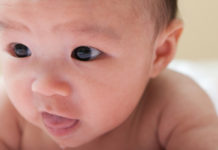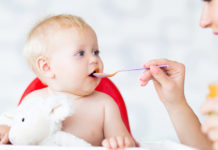Feeding at the breast may be healthier than feeding pumped milk from a bottle for reducing the risk of ear infection, and feeding breast milk compared with formula may reduce the risk of diarrhoea, according to a recent study by researchers at The Research Institute at Nationwide Children’s Hospital.
“We certainly don’t want women to stop pumping because there are not adequate data or guidelines about whether pumped breast milk is an equivalent substitute for feeding at the breast, so more research needs to be done,” said Sarah Keim, PhD, senior author of the study and principal investigator in the Center for Biobehavioral Health in The Research Institute at Nationwide Children’s.
A total of 491 mothers completed surveys as part of the study, published this week in The Journal of Pediatrics. Mothers who stated their intent to bottle-feed exclusively were not included in the study. In the remaining surveys, three out of four women used some combination of feeding from the breast, pumped milk and formula in the first 12 months of their children’s lives.
After accounting for demographic and other related factors, researchers found that one month of feeding at the breast was associated with a 4% reduction in the odds of ear infection, and they found a 17% reduction in the odds for infants fed at the breast for six months of infancy. Among infants who were fed only breast milk, either at the breast and/or pumped breast milk from a bottle, for the first six months, the odds of experiencing an ear infection increased by approximately 14% for infants fed pumped milk for 1 month and by 115% for infants fed with pumped milk for 6 months.
“While it is not completely clear why ear infections may be related to bottle feeding, it could be because bottles can create a negative pressure during feeding. This negative pressure is then transferred from the bottle to the middle ear of the infant during feedings, which may precipitate ear infections,” explained Dr. Keim.
Infants fed with breast milk by either mode for six months had an approximately 30% reduced risk of diarrhoea. Diarrhoea risk was reduced by 25% for infants fed any breast milk for six months, and by 26% for infants fed at the breast for 6 months, while infants fed formula for 6 months had a 34% increased risk of experiencing diarrhoea.
According to the researchers, this finding suggests that the substance fed, rather than the mode of feeding, may underlie differences in risk of diarrhea.
“This research begins to identify unique and separate associations of substance fed and mode of breast milk delivery, and demonstrates the importance of exploring these distinctive exposures in infant feeding research,” said Kelly McNamara Boone, co-author on the study.
In addition to identifying the distinct contributions of both the substance fed and the mode of breast milk delivery to infant health, the study demonstrated large socioeconomic differences in feeding patterns. Mothers who fed their infants breast milk only were of greater socioeconomic status than those who fed their infants formula. Women who only used bottles (containing breast milk and/or formula) to feed their infants were of lower socioeconomic status than those who fed their infants at the breast.
“This finding is consistent with previous research that shows positive associations between socioeconomic status and breastfeeding. Initiation and duration of breastfeeding may be explained by health care and information resources available to and accessed by mothers of greater socioeconomic status,” said Dr. Keim.
(Source: Nationwide Children’s Hospital, The Journal of Pediatrics)











